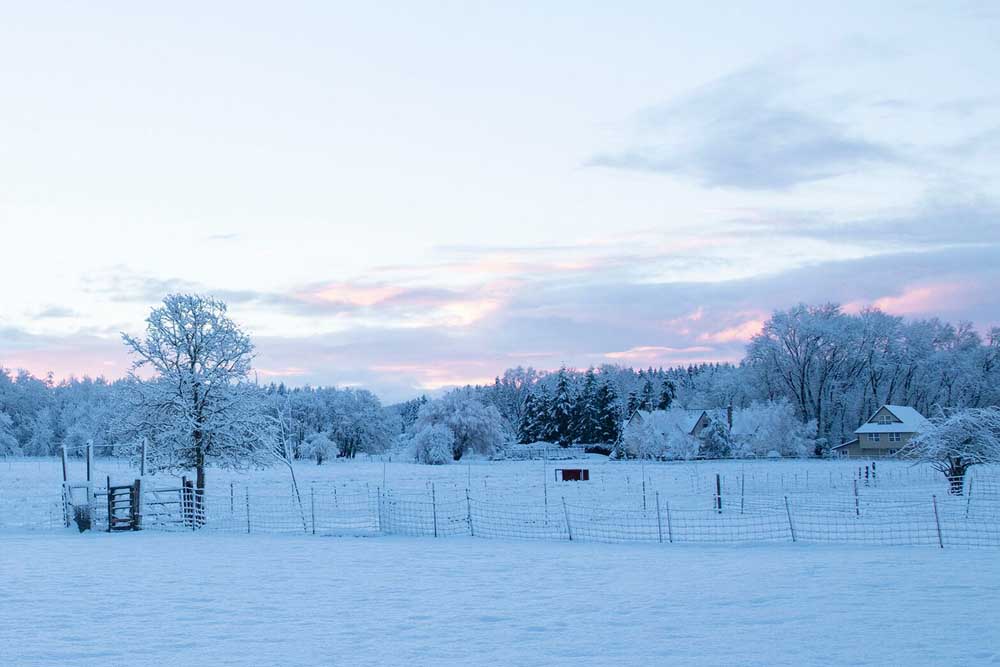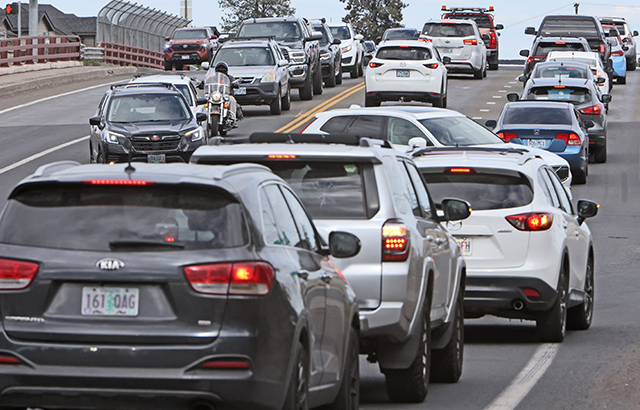Snow, rain brighten 2022 Western water outlook, but not for everyone
Published 8:15 am Tuesday, December 28, 2021

- Wet, snowy weather offer hope of erasing more drought areas in Oregon.
The Western U.S. could get a much-needed boost to water supplies in 2022, but significant catch-up is still needed to offset the lingering impacts of drought.
According to climatologists, the outlook varies widely by state and watershed.
Trending
Oregon
West of the Cascades, snowpack is good, though experts say it could take a few years of above-average precipitation to refill some basins.
Scott Oviatt, snow survey supervisor for Oregon’s Natural Resources Conservation Service, said to fill reservoirs and improve streamflows, substantial snowpack and precipitation are needed, which could be disrupted if there’s an early spring melt or dry period in the middle of winter.
As of Sunday, the snow-water equivalent in the Willamette Basin was 153% of average, and the snow-water equivalent in the Rogue-Umpqua was 187% of normal.
“That’s really great. The trend is towards recovery,” said Larry O’Neill, Oregon state climatologist and professor at Oregon State University.
But in Central and Eastern Oregon, where precipitation had been below-average this fall, drought may continue unabated.
Trending
“There’s probably going be an East-West divide this year,” said O’Neill. “Even though a lot of times you hear the Pacific Northwest is doing great this winter, Central Oregon probably isn’t going to recover this year. I want to make sure people are prepared.”
Southern Oregon, experts say, is a wild card. Snow and rainfall levels vary across the region, and complex water-management issues in the Klamath Basin are intertwined.
“A good water year is not going to solve the problems there,” said Bond.
Idaho
Bill Wojcik, meteorologist for the National Weather Service in Boise, said Idaho is on track for a better water year but has a long way to go.
“We had quite a deficit and we’re making up some ground,” said Wojcik.
According to SNOTEL data on Monday, the southern portion of the state bordering Nevada and Utah has below-average snow-water equivalent levels, the Owyhee and Upper Snake basins are at 95% of average, the Boise River Basin is at 125% of average and Payette is at 122%.
Though things are looking up, experts say it still would probably take 120% of average snowpack all winter to refill crucial reservoirs.
Washington
According to state climatologist Nick Bond, snowpack levels across most of Washington are above normal for this time of year.
Data released Monday via a SNOTEL report from the Natural Resources Conservation Service showed the snow-water equivalent in the Yakima Basin was about 97% of average. Other basins ranged from 100% to 126% of average.
“It’s unlikely we’ll have as bad of conditions as we did last year,” said Bond.
However, Bond said, to make up for deficits, climate models predict it would require 140% to 150% of normal precipitation levels to continue for six months to end the drought — “a tall order.”
Bond predicts La Niña, a weather event that chills the Northern U.S., may bring a cool, wet spring to help replenish water supplies.
Though the outlook is positive for irrigation districts, Bond said farmers running non-irrigated pastures and dryland crops will struggle in 2022 unless there’s more low-elevation rainfall in the coming months, something that’s not associated with La Niña.
California
Jeanine Jones, drought and interstate resources manager at the California Water Resources Department, said it’s “simply too early to tell” how the recent Sierra Nevada snow storms will impact next year’s water supplies.
Nevertheless, she said the situation looks positive.
“Currently, Sierra Nevada snowpack is well above average, which is great. Will that continue?” she said. “I will say we’re much better off than we were at this time last year.”
Jones said it will take significant precipitation to bring many reservoirs back to normal levels. Although some watersheds are doing well, Jones said others — including Shasta and Oroville — started the season “very, very low” and are still low.








